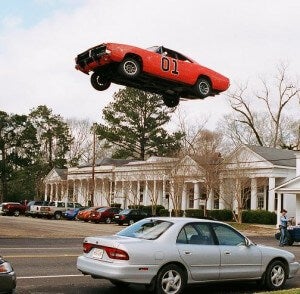
We live in an age of invention, my friends. DARPA, the research branch of the US Department of Defense, is hosting a workshop on January 14th for many of its developers. The topic: flying cars. That’s right, nearly fifty years after the debut of the Jetsons, we’re finally getting serious about getting people into the sky. DARPA is aiming to eventually have a prototype vehicle, to be named the Transformer or TX, which will spend the majority of its time traveling on land, but is capable of sustained flight. The proposed 1 to 4 passenger craft will need vertical take off and landing (VTOL) capabilities and be able to complete a mission on a single tank of fuel. Proponents hope that such a hybrid should help soldiers in the field avoid road side bombs and ambushes by giving drivers the ability to choose unique and dynamic paths to their destination. If the TX succeeds, it would pave the way for non-military commercial vehicles. In other words, pray that DARPA gets this done right, because it could mean flying cars for all of us.
Timetables for the TX production don’t seem to be in discussion yet. There’s certainly a lot of work to be done: development of enabling technologies, coordinating production across several contractors, and finally building a prototype. DARPA has provided a list of technologies that may be used: adaptive wing structures, ducted fan propulsion, lightweight composite materials, advanced flight control technology, hybrid electric drives, and advanced batteries. That list gives us some idea of what the TX may look like: a gas/electric rover with fold down (or other wise non-fixed) wings and fan propulsion. Definitely a cool concept.
DARPA’s TX sounds to be the opposite of the Transition from Terrafugia, a small plane that transforms into a car for driving home. Developers of flying cars have long had a difficult time figuring out exactly how much time such vehicles should spend on the ground and in the air. The Pal-V seems to want to be half and half, while the Urbanero looks more accustomed to being in the air. When it comes to a reliable commercial market though, I think that a car that is sometimes a plane is going to make more sense than a plane that is sometimes a car.
Flying just isn’t that fuel efficient, and it requires more training, and is more risky (for small personal craft). A car isn’t a bad way to get around most of the time. In emergencies, or over difficult terrain, a short flight could be just what is needed. But most of the time, economic and safety concerns should keep us on the ground for now. Which is why the DARPA TX seems to be on the right track. It has an achievable and useful aim (increased vehicle mobility/tactical versatility), benefits from many pre-existing technologies, and has the support of a major government entity. Who knows, the next decade could be the era of the flying car. I’ll take mine in green, please.
[photo credit: Warner Bros. Pictures]


